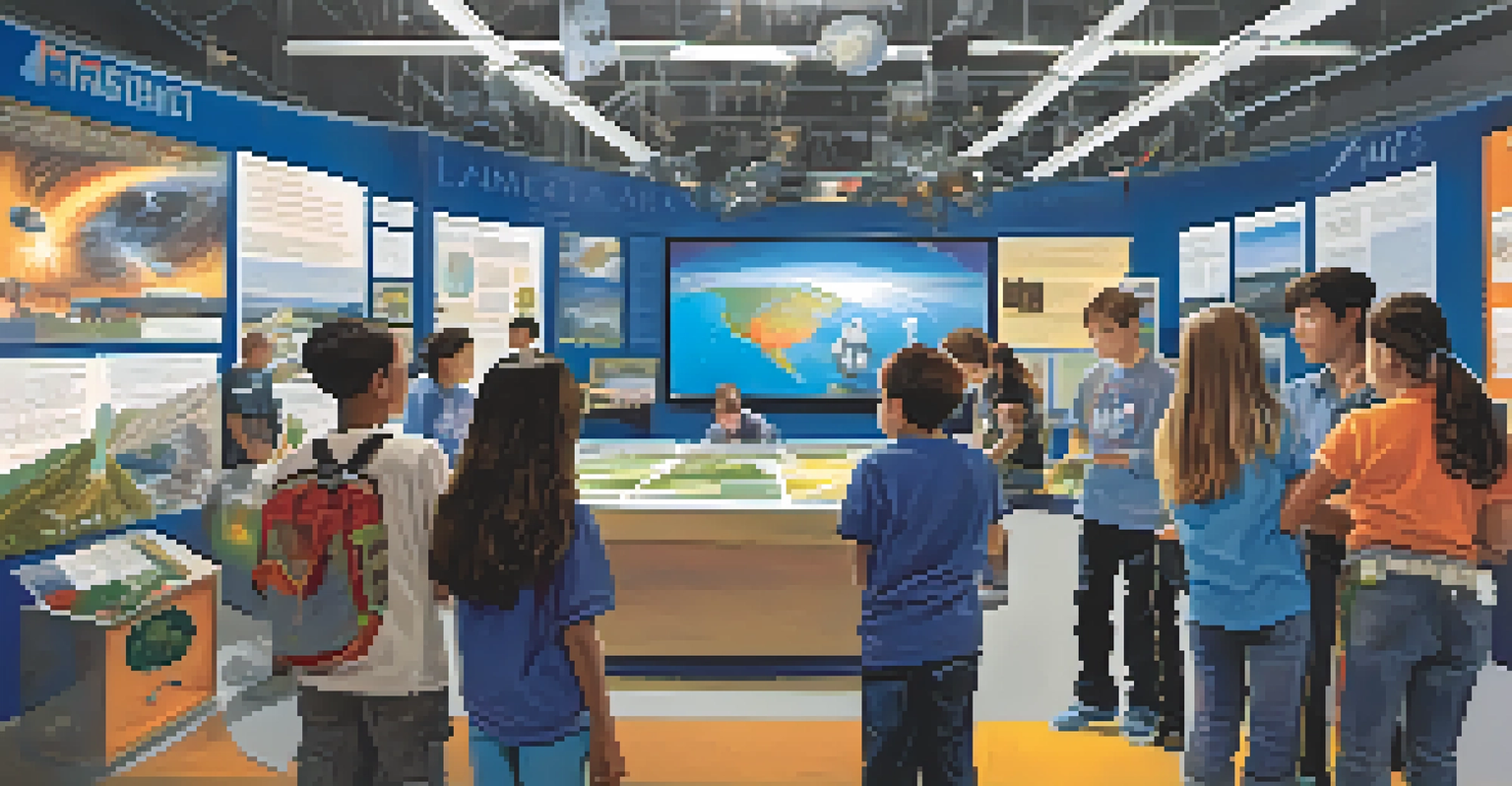NASA Ames Research Center: A Hub for Scientific Discovery

Introduction to NASA Ames Research Center's Mission
Nestled in the heart of California's Silicon Valley, NASA Ames Research Center is a beacon of scientific exploration. Established in the 1930s, it initially focused on aeronautics but has since expanded its mission to encompass a wide array of scientific disciplines. The center emphasizes collaboration, innovation, and cutting-edge technology to solve some of humanity's most pressing challenges.
The important thing is not to stop questioning. Curiosity has its own reason for existing.
Ames aims to inspire the next generation of scientists and engineers while addressing critical issues such as climate change, space exploration, and human health. This commitment to advancing knowledge is evident in its diverse projects and partnerships with academic institutions, industry leaders, and international organizations. With a culture rooted in curiosity and creativity, Ames stands at the forefront of scientific discovery.
As we delve deeper into the center's various research areas, it becomes clear that Ames is much more than just a NASA facility; it is a hub where ideas are transformed into reality, paving the way for future advancements.
Ames Research Center's Role in Aeronautics Research
One of the cornerstones of NASA Ames is its longstanding dedication to aeronautics research. The center plays a crucial role in developing technologies that enhance the safety and efficiency of air travel. Through extensive wind tunnel testing and simulations, researchers at Ames contribute to the design of advanced aircraft that are not only faster but also more environmentally friendly.

For instance, the development of the Green Engine initiative is a prime example of how Ames is addressing the aviation industry's need for sustainable practices. By exploring alternative fuels and innovative propulsion systems, the center seeks to reduce aviation's carbon footprint. This commitment to sustainable aeronautics aligns with global efforts to combat climate change.
Ames Advances Aeronautics Research
NASA Ames Research Center enhances air travel safety and efficiency through innovative aeronautics technologies and sustainable practices.
Ames also collaborates with other NASA centers and private companies to push the boundaries of what is possible in flight. This synergy fosters an environment where groundbreaking ideas can take flight, literally and figuratively.
Space Exploration Initiatives at NASA Ames
NASA Ames Research Center is pivotal in advancing space exploration, contributing to missions that stretch our understanding of the universe. The center is involved in projects ranging from planetary research to astrobiology, probing the potential for life beyond Earth. With its state-of-the-art laboratories and facilities, Ames is well-equipped to support these ambitious endeavors.
Science knows no country, because knowledge belongs to humanity, and is the torch which illuminates the world.
One notable project is the Kepler Space Telescope, which has revolutionized our understanding of exoplanets—planets outside our solar system. Ames scientists played a key role in the mission's design and data analysis, helping to discover thousands of new worlds. These findings not only captivate our imagination but also inform our search for life beyond our planet.
In addition to Kepler, Ames is also working on missions to Mars and beyond, studying the Martian atmosphere and surface to understand the planet's habitability. These efforts highlight Ames's commitment to pushing the boundaries of human knowledge and exploration.
Innovative Research in Astrobiology at Ames
Astrobiology, the study of life in the universe, is another exciting area of research at NASA Ames. Scientists at the center explore the conditions necessary for life to exist, both on Earth and elsewhere in the cosmos. This interdisciplinary field combines biology, chemistry, and planetary science to answer fundamental questions about our place in the universe.
Ames researchers conduct experiments that simulate extraterrestrial environments, investigating how life might adapt to extreme conditions. These studies not only deepen our understanding of life's resilience but also guide the search for biological signatures on other planets. The knowledge gained from these experiments may one day help us locate life beyond Earth.
Pioneering Space Exploration
Ames plays a crucial role in space exploration initiatives, contributing to groundbreaking discoveries like exoplanets and Mars research.
By collaborating with institutions worldwide, Ames is at the forefront of astrobiological research, fostering a global community of scientists dedicated to uncovering the mysteries of life in the universe.
Contributions to Earth Science and Climate Research
NASA Ames Research Center is also committed to understanding our home planet, particularly in the context of climate change. The center conducts extensive research on Earth’s climate systems, working to predict and mitigate the impacts of global warming. By utilizing advanced modeling techniques and satellite data, Ames researchers provide critical insights into climate-related phenomena.
One of the standout projects is the Atmospheric Radiation Measurement (ARM) program, which studies the Earth's atmosphere and its interactions with solar energy. This research is vital for improving climate models and understanding how changes in the atmosphere can affect weather patterns and ecosystems. Such knowledge is essential for developing strategies to combat climate change.
Through its Earth science initiatives, Ames not only contributes to our understanding of the planet but also informs policymakers and the public about the urgent need for climate action. The center's work underscores the interconnectedness of scientific disciplines and the importance of collaborative efforts in addressing global challenges.
The Role of Technology and Innovation at Ames
At NASA Ames, technology and innovation are at the heart of every research initiative. The center is home to some of the most advanced facilities in the world, including high-performance computing systems and simulation labs. These resources enable scientists and engineers to conduct cutting-edge research that pushes the boundaries of technology across various fields.
For example, Ames is leading efforts in developing artificial intelligence and machine learning applications for space exploration. By leveraging these technologies, researchers can analyze vast amounts of data more efficiently, which is crucial for missions that require quick decision-making in challenging environments. This technological advancement enhances the capabilities of NASA's missions.
Commitment to Climate Research
The center actively researches Earth's climate systems, aiming to predict and address the impacts of climate change through advanced modeling.
Moreover, Ames actively collaborates with private sector partners to foster innovation and bring new technologies to market. This synergy between public and private sectors not only accelerates research and development but also drives economic growth and job creation in the region.
Educational Outreach and Community Engagement at Ames
NASA Ames Research Center is dedicated to inspiring future generations through educational outreach and community engagement. By providing programs and resources for students and educators, Ames aims to ignite a passion for science, technology, engineering, and math (STEM) in young minds. This commitment is vital for cultivating the next generation of scientists and engineers.
One of the center's flagship programs is the Ames Academy, which offers hands-on workshops and internships for students. These experiences allow participants to work alongside scientists and engineers, gaining invaluable insights into what a career in STEM entails. By fostering these connections, Ames helps students envision their future in scientific fields.

In addition to student programs, Ames also hosts public events and exhibitions, making science accessible to the broader community. Through these initiatives, the center not only shares its discoveries but also emphasizes the importance of science in our everyday lives, creating a more informed and engaged public.